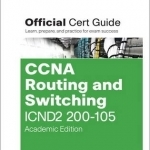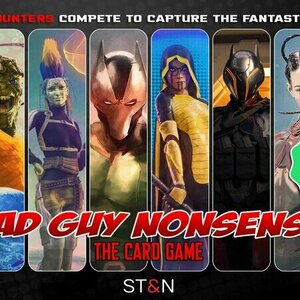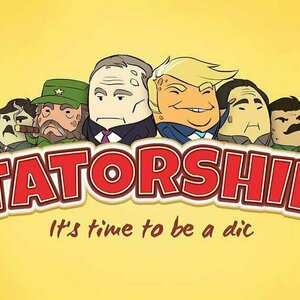
TomTom GO Mobile
Navigation and Travel
App
GET THERE FASTER with the all-new TomTom GO Mobile app >> Drive up to 50 FREE miles every month The...

Green Screen Movie FX Studio
Entertainment and Photo & Video
App
Green Screen Movie FX Studio is an incredibly powerful special effects editor that allows you to...

Vivino Wine Scanner
Food & Drink and Shopping
App
Buying wine in Vivino is simple and easy. Vivino has taken the guesswork out of wine shopping. ...

i Sail GPS : USA NOAA Marine Chart Plotter
Navigation and Travel
App
Your iPhone or WiFi+Cellular iPad can be a high-performance GPS receiver with USA NOAA Raster...

UrbanCoach Soccer Lite
Sports and Health & Fitness
App
UrbanCoach is the ultimate soccer coaching application. Manage everything about your teams. Track...
Purple Phoenix Games (2266 KP) rated Bad Guy Nonsense in Tabletop Games
Jul 2, 2020
Disclaimer: We were provided a PnP copy of Bad Guy Nonsense for the purposes of this preview. Please excuse my lack of a color printer, but know that the final artwork and cards ARE eye-catching, colorful, and clear to read. I do not intend to rehash the entire rulebook in this preview, but rather provide an overview of the gameplay. Check out the publisher’s website to download the rulebook for yourself, and keep an eye out for the Kickstarter campaign coming soon! -L
Bad Guy Nonsense is a card game of hand management and a bit of take that in which players are trying to score the most points by capturing Bad Guys. Here’s how it goes: shuffle the deck and deal 6 cards to each player. On your turn, you will perform one of 3 possible actions: Capture Bad Guy, Discard 1 Card, or Play 1 Special Card. To Capture a Bad Guy, use one of the 4 capture combinations and set the Bad Guy with corresponding cards in your play area. If you choose to Discard 1 Card, select a card from your hand to discard and then draw 1 new card from the draw deck. To play a Special Card, play it to the discard pile and perform its corresponding action. Whatever action you choose to perform, you will always draw back up to 6 cards at the end of your turn. Play continues until the draw deck runs out. Players may then place any remaining Bad Guy captures from their hand into their play area if they have any. Everyone counts up their points – positive points for Bad Guy captures, negative points for Bad Guys still in hand, and 1 point per Nonsense card in hand – and the player with the most points is the winner!
The basis and gameplay are pretty simple and straight-forward, and that’s what I love about Bad Guy Nonsense. It is so easy to teach, learn, and play that I can see this game played in so many situations. Whether I want to introduce some newer gamers to the hobby, or I need a fast and fun filler between longer games, or even if I want something to play with younger gamers, this game hits that sweet spot. Even though the gameplay is pretty simple, it still needs a bit of strategy for success. You need to decide which actions to take and when to ensure maximum benefit for yourself. Are you willing to risk discarding a card in hopes for getting a new one that may be more beneficial? Should you try to steal that high-value capture from an opponent? Or do you just try to fly under the radar, silently amassing your points and hoping your opponents don’t take notice? There are lots of options, and that keeps the gameplay refreshing and engaging. And the Special Card abilities add a fun strategic twist to the game too – from stealing opponent’s captures for yourself to searching the Discard deck for the card you want, you are always on your toes when playing this game.
Let’s talk components. Obviously, as I mentioned earlier, I do not have a color printer, so my PnP version leaves much to be desired. However, the final production copies of the game will feature tarot-sized cards that are bright, colorful, and sturdy in hand. I enjoyed this game so much that I will probably back it to get a copy of that higher quality for myself!
All in all, Bad Guy Nonsense is a fun little card game that can be played in many different situations. The gameplay is relatively light, the rules are simple to understand, and the time to play is the perfect length. Rarely do I play just one game of Bad Guy Nonsense, I will play 2 or 3 at least back-to-back! If you’re looking for a fun game that can be played with the entire family, consider backing Bad Guy Nonsense. It has a great balance of strategy and light-hearted fun that will keep you coming back for more.
Purple Phoenix Games (2266 KP) rated Tatorship in Tabletop Games
Feb 18, 2020
Disclaimer: We were provided a copy of this game for the purposes of this preview. This is not the finished product, so some of the components may change in the final printing. -L
Tatorship is a card game of hand management and bidding in which players are racing to complete their secret political missions before their opponents. To set up the game, place the 6 Rights in their respective piles in ascending order. Each player randomly selects a Tator, Top Secret Mission, Bottom Secret Mission, and Executive Mission, as well as Action cards and a Bluff card. The Tator is your character, and provides a unique Executive power. The Mission cards (Top, Bottom, and Executive) each refer to specific Rights in the play area. Action cards provide resources necessary for interacting with the Rights, and for use during the Election.
On your turn, you interact with the current Rights on the table. The Rights in play act as the ‘rules’ for the current round. For example, one Right tells you how many Action cards to draw each turn, and another tells you what your hand limit is at the end of your turn. During this phase, you will also have the opportunity to ‘erode’ (remove) Rights from play. To erode a Right, you must pay the resources displayed on the Right card. Each Right has 4 cards, and the bottom-most card must be showing for that Right to be considered to be completely eroded. Your secret Missions require you to erode specific Rights in play, so you must strategize how to use your resources to best benefit your Missions. After all players have taken a turn, the game moves to the Election phase. During the Election, players are casting votes (the # of resources on the Action card is the # of votes it is worth) in an effort to elect a player to be the Executive for the next round. The Executive goes first in the next round, and gets to assign Roles to all players. In order to complete your Executive mission, you must have the Executive card at time of completion. You can vote for an opponent, as well as yourself. Cast a vote with your Bluff card, however, and your votes do not count! Trick your opponents into thinking you’ve voted for them, but reveal the Bluff and get those votes back. Didn’t win the Election? That’s ok! Take a Backstab card as a condolence. Backstab cards can be played at any time and can negatively affect your opponents, or could give you a leg up over opponents. Play continues until one player has completed all 3 of their secret Missions.
If you are confused at all by the rules/gameplay overview above, I have to admit that I am too. The rules provided with this game are extremely vague and confusing to understand. Not even a rulebook, these rules are compiled on 3 separate playing cards. The text is sparse, ambiguous, and contradictory. For example, one card says that each Right is followed once per turn per player, but in any order. But one of the Rights pertains to the Election phase, which I believe only happens once per round? Or does it happen on every single players’ turn since each Right is supposed to be followed by every player on every turn? The ambiguity of the rules bleeds over into other cards as well. Some cards say to ‘discount’ a Right, but nowhere does it say what ‘discount’ means. Do you immediately erode that Right by one? Or do you just pay one fewer resource to erode? There is no clarification anywhere, and that made this game frustrating to play.
Another qualm with this game is that it is supposed to be educational, but I do not think it achieves its goal. I do have to commend the creators for their efforts, but I think they fall flat. Every Action card has small text at the bottom that details the political concept addressed on the card. Here’s the catch – the text is educational, but it is so small that it can be easily ignored. It also has no bearing whatsoever on the gameplay, so I have to admit that I almost never read any of that extra text.
In theory, this game could be fun and educational. In actuality, though, it falls flat. The ambiguity of the rules meant that we played differently nearly every time. We tried interpreting the rules in several ways, but ultimately we just got frustrated by not knowing how everything actually works. With some serious rules work, this game has the potential to be something good. But in its current state, it feels more like a half-baked potato.

CCNA Routing and Switching ICND2 200-105 Official Cert Guide
Book
Trust the best-selling Official Cert Guide series from Cisco Press to help you learn, prepare, and...
Purple Phoenix Games (2266 KP) rated ICECOOL in Tabletop Games
Jun 25, 2019 (Updated Aug 13, 2020)
You and your Penguin buddies are so hungry that you decide to skip out on class early to go grab some snacks. But you’ve forgotten about the Hall Monitor! Their mission is to catch any unauthorized hall wanderers and send them back to class. Can you outmaneuver the Hall Monitor, or will you be caught and forced to go hungry until the end of class?
Disclaimer: I do not intend to rehash the rulebook in its entirety in this review, but rather provide a general overview of the rules and gameplay. To read the rules more in-depth, grab a copy of the game from your FLGS! -L
ICECOOL is a dexterity game in which players are trying to amass the most points over a number of rounds. Here’s how a round plays out. Select one player to be the Hall Monitor (called the Catcher) for the first round, and place their Penguin pawn in the kitchen box. All other players, aka the Runners, take their 3 colored fish tokens and attach them to the three corresponding doorways, and begin with their Penguin pawns in the classroom box. As a Runner, your goal is to collect your 3 fish tokens from their doorways. How do you do that? Flick your Penguin through a fish doorway to collect your snack. Yes, you read that right – flick. In this game, all movement is achieved by literally flicking your pieces throughout the boxes. To collect a fish, you must pass through the corresponding doorway completely in one single flick. Each time you collect a fish, draw the top card from the fish deck and keep it hidden from your opponents. Your other goal? Avoid the Catcher. If at any point, your Penguin comes into contact with the Catcher, you must forfeit your Hall Pass to the Catcher.
As the Catcher, your goal is to collect the Hall Pass of every other player. You achieve this goal by flicking your Penguin into any of the Runners. Turn order is as follows: Runners-Catcher, Runners-Catcher, etc., until the end of the round is triggered. The round is over when the Catcher has collected Hall Passes from every other player, or any Runner has collected all 3 of their fish. At the end of the round, each player collects 1 fish card per Hall Pass in their possession. So if you were caught by the Catcher, you’re outta luck! For the next round a new player is selected to be the Catcher, and play continues as above. The game ends once every player has taken a turn as the Catcher. Count up the points from your collected fish cards, and the player with the most points wins!
So a game of flicking Penguins around some boxes – sounds pretty simple, right? Yes and no. ICECOOL admittedly does not really require any serious strategy. Yes, you are trying to collect all 3 of your fish, but you’re mainly playing keep-away from the Catcher. And as the Catcher, you’re “It” in this quasi-game of Tag. So strategic, this is not. On the other hand, mastering the art of flicking your Penguin is a long and arduous process. Ok, it’s not arduous, but it is tricky to master! ICECOOL really puts your dexterity to the test to see if you have the proper form and control to move your Penguin to exactly where you want it to go. Half of the fun of this game is all the whiffed flicks and the comically accidental misdirections. The rulebook offers some flicking techniques to try out before your first game, and they are actually pretty helpful. I’ve not yet been able to achieve the jumping flick, but maybe one day I will rise to that level.
One other super neat thing about ICECOOL is the game setup. You’re playing with boxes of varying sizes. But here’s the kicker: they all nest into each other!!! So for storing, it looks like you just have one box. But in reality, there are 4 other boxes hidden inside. This concept is not one I’ve seen before in any other game, so that just makes ICECOOL a little bit more unique and interesting for me. Since I’m talking about the boxes, let me touch on components. The boxes are all of great quality, and are sturdy enough to hold up to clashing penguins. The Penguins themselves are good solid plastic, and I know they will last forever. Be careful though, flicking too hard might hurt your fingers! The deck of fish cards are a standard card quality. The artwork of the game is cute and thematic, and overall it’s a fun, immersive experience.
ICECOOL is not a game that I pull off the shelf at every game night. But it is one that is light enough, and entertaining enough, that it certainly gets a good amount of gameplay from my collection. Whether you are using it as a nice, short filler game, or you’re playing with some young’uns, it makes for a happy atmosphere full of energy and happiness. And that’s why Purple Phoenix Games gives ICECOOL a brrrrrrrrrilliant 18 / 24.
Purple Phoenix Games (2266 KP) rated Terrible Candidates in Tabletop Games
Aug 28, 2020
Disclaimer: We were provided a copy of Terrible Candidates for the purposes of this review. The components pictured are finalized and are what come in a production copy of the game. I do not intend to rehash the entire rulebook, but rather provide an overview of the rules and general gameplay. -L
Terrible Candidates is a party game in which all players, candidates vying for the Presidency, participate in a series of public debates. At the end of the game, the player who has won the most debates is declared the new President! Setup is simple: Deal 5 Policy cards to each player, place the remaining Policy and Topic cards in the center of the table, place the Dumpster Fire of Democracy card within reach of all players to indicate the discard pile, and keep the President card off to the side.
The gameplay itself is just as simple! Select a pair of neighboring players to be the first debate Candidates. A Topic card is revealed, and the 2 Candidates select a Policy card from their hand to play in this debate. Once the Policy cards are selected, each Candidate gets 30 seconds to explain/debate their selected response to the Topic, providing as many talking points, facts (true or alternative) and other general jargon or nonsense to convince the Media (the non-Candidates for this turn) to vote for them. When both Candidates have made their debates, each member of the Media is allowed to ask one question, providing an extra chance for political shenanigans or hilarity. Once all questions have been asked, the Media votes on which Candidate they believe was the best of the pair, and that winning Candidate keeps the Topic card as their point. The game moves on to the next debate, rotating one person around the group to get a new pair of Candidates – one Candidate from the previous debate, and a new competitor. Play progresses in this manner until all players have participated in 2 debates, thus ending the round. Any players who have no Topic cards (meaning they didn’t win either of their debates in the round) is knocked out of the game, and the next round commences with the remaining players. The second round follows the steps of the first, and when all players have debated twice, the game ends. The player with the most Topic cards is declared the winner and becomes President!
I know that this game might seem like a lot, but it’s honestly not complicated. Each round works as follows: Debate, Question, Vote, and repeat until all players have done 2 debates. If there is one thing that is a must for a party game, it’s a simple set of rules and gameplay to maximize playing time, and Terrible Candidates has adhered to that policy (See what I did there?). The overall atmosphere of the game is reminiscent of CAH, but with a twist. In CAH, all players submit a card and one player is the ultimate judge for the turn, thus allowing players to cater to the personality/sense of humor of that one person. Terrible Candidates is a group effort, meaning that you have to get a majority of the votes in your favor to win the debate. Instead of focusing on one person, you have to be quick-witted and clever enough to find ways to influence all other players. That makes it feel like a more engaging game overall, since all players are involved in every step of the turn.
Obviously, this game has some political implications, but the gameplay can be whatever your group wants it to be. Playing with a group of highly political friends? Maybe it will turn into some intelligent debates and conversations throughout the night. Playing with the fam at a reunion or get-together? Go crazy, make up hilarious stories, and just have a good time. It all depends on your gaming group, and it can be whatever kind of game you want it to be – serious or silly. A caveat with this, as with CAH-esque games, is knowing your group and the kind of humor that is acceptable. Just make sure that however you decide to play, everyone involved is comfortable and having fun!
All in all, I think that Terrible Candidates is a fun and funny little game for everyone involved. As a Candidate, you put your improv skills to the test as you make ridiculous claims or present decent ideas in your 30-second time limit. As a member of the Media, you also get in on a little improv, coming up with a question to ask the Candidates, and then casting your vote for the most convincing side. This game can be so unpredictable, and that’s what helps keep it fresh, entertaining, and funny. Whether you are politically active or not, this game can result in some great times and good conversations among the group. If you’re up for it, take a chance and cast your vote for Terrible Candidates!



